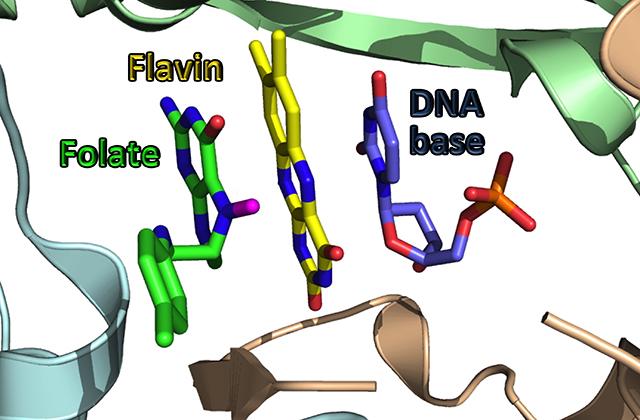Humans have been successful at treating a host of diseases. Yet some continue to elude medicine’s best attempts.
Tuberculosis killed 15 percent of the 9.6 million people who contracted it worldwide in 2014. Typhus has flared periodically throughout history, with deadly consequences. Rocky Mountain spotted fever is a tick-borne threat in North and South America. Pneumonia is common everywhere.
What unites these diseases is their ability to fend off antibiotics and continue to reproduce, through a mysterious molecular route that yields thymine, a DNA building block the bacteria need to survive and reproduce.
Now, researchers at the University of Iowa have revealed how these diseases replicate by tracing the precise steps through which they use a gene absent in humans, called thyX, to code an enzyme to produce thymine. In a paper published online Jan. 28 in the journal Science, the Iowa chemists break down each stage in a rapid-fire chain of chemical reactions showing how thyX and the enzyme it encodes are used in the diseases’ DNA-production cycle.

